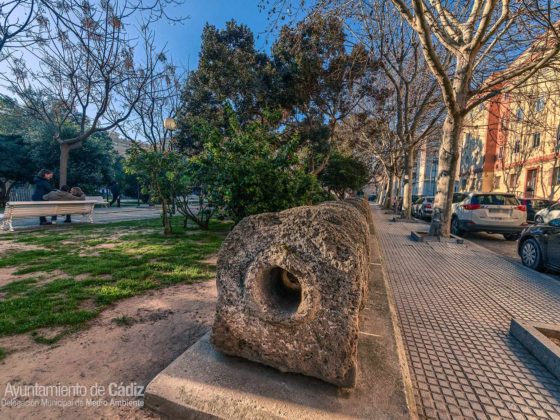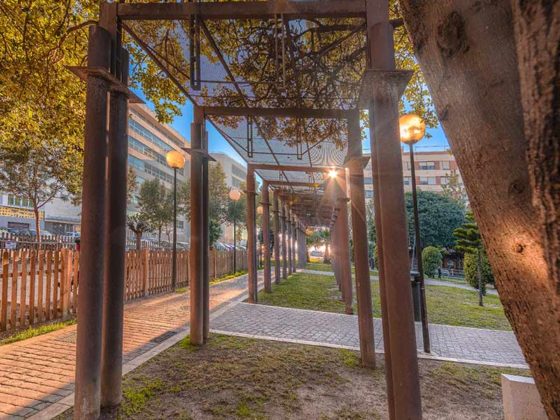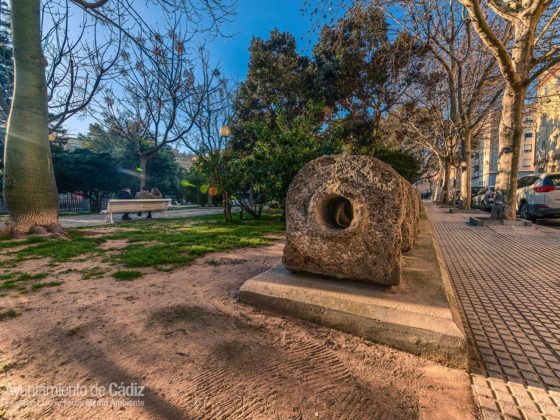The presence of the archaeological remains of the Roman aqueduct found on the beach of Cortadura stands out
The Square
Botanical species
The Square
Plaza Asdrúbal has an area of 6680 m2. It was built in the first decade of the 21st century, on top of a plot of land that had been empty and abandoned after the demolition of the old bullring in Cadiz.
This green area became a recreational area, which was surrounded mainly by housing blocks and open to the Atlantic Ocean. The new Avenue of 1812 leads up to the square, connecting the second bridge with the seafront.
Among the resources of this square, we can find a playground and an area for dogs.
It highlights the presence of the archaeological remains of the Roman Aqueduct found on the beach of Cortadura.
The Cadiz-born Balbo el Mayor, ordered the construction of an aqueduct to supply water to the Neapolis or new city that was built in the 1st century BC, which is a site currently occupied by the neighbourhoods of Santa María and el Pópulo.
The aqueduct was supplied by the Tempul spring and travelled more than fifty kilometres to Gades (former name for Cadiz). It had high sections and sections that went underground in order to get the proper pressure of the liquid to reach the large deposits located next to Puerta de Tierra. The last section was formed by blocks of stone pierced by a lead pipe which went through its interior.
The remains of the aqueduct that are currently exposed there, come from the remains found in the beach of Cortadura.
These archaeological remains contrast with the lampposts of the central corridor of the square, which has a large pergola as another of its characteristic elements. In one of the gardens there is a bust of Blas Infante, Father of the Andalusian Homeland and ideologist of Andalusianism, along with a map of Andalusia with the inscription “Andalusia by itself, for Spain and humanity”.
Botanical species
The most relevant botanical species:
|
Acer pseudoplatanus Araucaria heterophylla Ceratonia siliqua Cercis siliquastrum Chorisia speciosa Cycas revoluta Dracaena draco Feijoa sellowiana |
|
Ficus macrophylla Ficus rubiginosa Gleditsia triacanthos Grevillea robusta Livistona chinensis Melia azedarach Morus alba Metrosidero tomentosa |
|
Myoporum laetum Phoenix canariensis Platanus hybrida Prunus dulcis Ulmus spp Washingtonia robusta Washingtonia filifera |






































